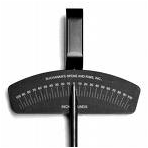 I don’t know anyone that starts out their life with a personal vision statement like this one.
I don’t know anyone that starts out their life with a personal vision statement like this one.
My plans are to be mediocre in all that I do. Perhaps my performance in my family, at school or at work will be good (perhaps not). No matter, it is okay if one day someone notices and remembers me.
If we heard someone say such things, we would feel pity for the limited hope that they feel and the small impacts that they aspire to make on those around them. We might suggest that if they started with something different, their life might result in far more significance. They might be inspired to achieve or be more than they are today. For isn’t our future often affected by what we hope to accomplish?
Well, the importance of a vision for a person is also true for competitive intelligence.
Remember where we are in forming a new competitive intelligence function in a business. We started by identifying an unfulfilled need in the organization (“Find the Pain”). Then, we took the initiative to address that need (“Get the Job”). The third step was to hint at the vision for competitive intelligence (“Tease the Vision”) without laying out the complete vision statement. Next, we put in place some fundamentals for the effort (“Frame the Foundation”, “Setting Some Standards”, “Introduce the Brand”). The last installment of the series described the practical step of identifying the needed tools (“Accumulate the Tools”).
Now we are back to the vision for our competitive intelligence function.
Read the rest of this entry
 A couple of days ago a friend of mine called to borrow a specific tool. He was going to start a repair to his riding lawnmower and needed a torque wrench. He has a large number of tools already – screwdrivers, saws, sockets, pliers, drills, etc. – that he has previously used to make or repair things around his house. However, on this day and for this lawnmower repair project, he needed something that he did not already have. So what did he do? Well, he started with the first and most powerful tool that he had to find the tool that he was missing. He called someone that he knew. Now it turns out that I was no help that day since I didn’t have a torque wrench. However, if he secretly didn’t want to buy the tool, I could have easily connected my friend with someone else that had a torque wrench to lend.
A couple of days ago a friend of mine called to borrow a specific tool. He was going to start a repair to his riding lawnmower and needed a torque wrench. He has a large number of tools already – screwdrivers, saws, sockets, pliers, drills, etc. – that he has previously used to make or repair things around his house. However, on this day and for this lawnmower repair project, he needed something that he did not already have. So what did he do? Well, he started with the first and most powerful tool that he had to find the tool that he was missing. He called someone that he knew. Now it turns out that I was no help that day since I didn’t have a torque wrench. However, if he secretly didn’t want to buy the tool, I could have easily connected my friend with someone else that had a torque wrench to lend.
 I was reading my local newspaper this morning. In the sports section, there was an article extolling the positive impact that the new pitching coach had had on the professional baseball team in my area. All of the pitchers were suddenly pitching better. More strikes, longer outings and more wins seem to be rule instead of the rare exception that we had enjoyed in past years. What had made the difference, the new pitching coach was asked. Was he emphasizing new techniques or trickier pitches? Maybe he was having all of the pitchers exercise more or differently than before? Perhaps it was not only the pitchers but the also the catchers (who usually decide what kind of pitch – fastball, curve, change up – that the pitcher throws) that had improved?
I was reading my local newspaper this morning. In the sports section, there was an article extolling the positive impact that the new pitching coach had had on the professional baseball team in my area. All of the pitchers were suddenly pitching better. More strikes, longer outings and more wins seem to be rule instead of the rare exception that we had enjoyed in past years. What had made the difference, the new pitching coach was asked. Was he emphasizing new techniques or trickier pitches? Maybe he was having all of the pitchers exercise more or differently than before? Perhaps it was not only the pitchers but the also the catchers (who usually decide what kind of pitch – fastball, curve, change up – that the pitcher throws) that had improved?